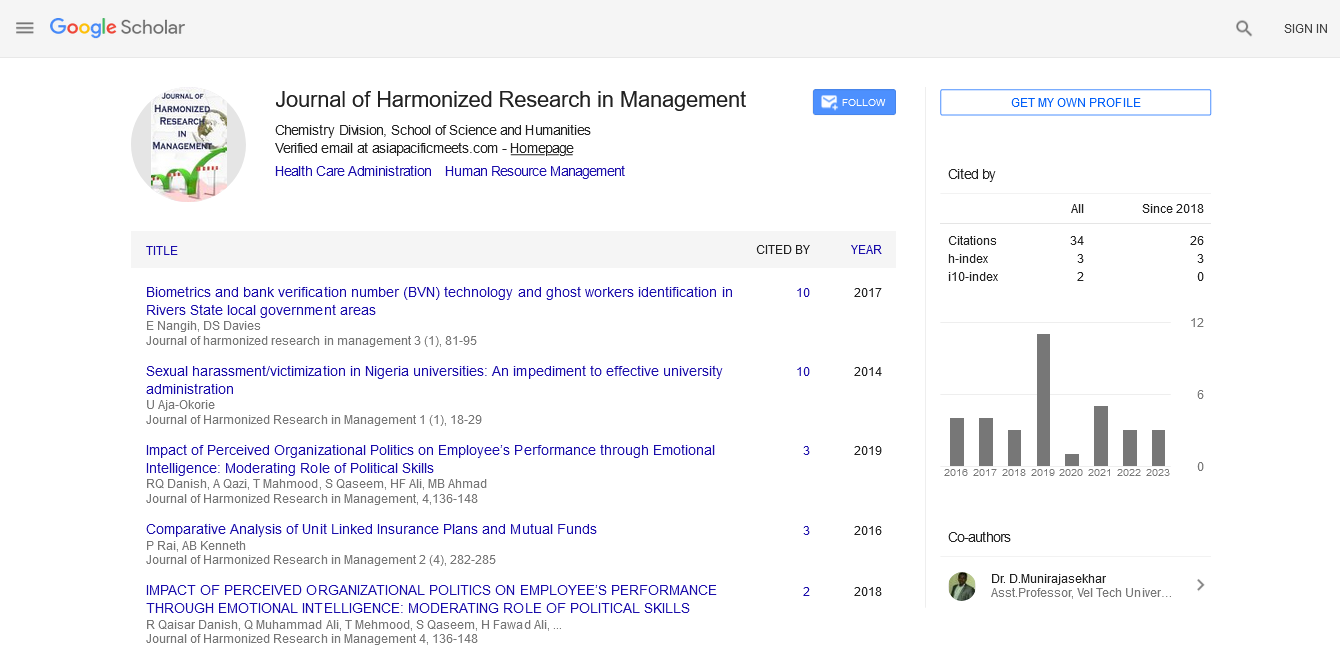Perspective - (2022) Volume 8, Issue 1
IMPROVEMENT OF ORGANIZATIONAL PERFORMANCE BY APPLYING LEADERSHIP STYLES AND ENTREPRENEURIAL ORIENTATION PROGRAMS
Sileshi Javer*Received: Mar 01, 2022, Manuscript No. JHRM-22-62986; Editor assigned: Mar 04, 2022, Pre QC No. JHRM-22-62986 (PQ); Reviewed: Mar 18, 2022, QC No. JHRM-22-62986; Revised: Mar 25, 2022, Manuscript No. JHRM-22-62986 (R); Published: Apr 04, 2022, DOI: 10. 30876/ 2454-5384.22.8. 124
Description
Leadership and quality of services have been linked together, where both influence each other in a significant manner. Effective leadership in the field of healthcare has attracted research attention over the last few years. One of the key areas of focus by the Cameroon government, which is believed to better the country’s health care sector, has been the quality of leadership. Claims have been made that the most effective way of achieving high-quality service delivery would be through strong leadership. In the recent past, the research sphere focusing on investigating the leader’s influence on managing the quality of services among the workers has been highlighted as one of the most developing areas. Recognition of these opportunities includes activities check the external environment for gain new markets, opportunities to complement the needs of consumers of non-fulfilled, repair problems already in the process of work, and foster the birth of ideas in creating a new product. The reason behind this is that leaders have a critical role in ensuring the formulation of collective norms and assisting workers to face and resolve arising challenges. The present study explored the effects of leadership styles on quality of services in hospitals of the Cameroon Baptist Convention Health Services.
It is out of the various leadership characteristics that researchers have identified different leadership styles. Hence, it is arguable that there are certain leadership styles more common to some leaders than others based on the leadership characteristics possessed by the leaders.
Observed that leadership style might be applicable in one person than another due to a combination of many other factors and claimed that good leadership is as a result of the interaction between the individual and the social situations and not necessarily a result of a predetermined set of traits. The leader should clearly define the responsibilities, duties, and needs of every worker as a way of showing commitment to their role in the organization, the top- level management expectations should be identified and communicated properly to leaders and their subordinates. Making generalizations about the effect of the various leadership styles on the quality of services offered by healthcare workers in hospitals requires the use of inferential statistical tests. Parametric statistical tests are usually used if the sample data is normally distributed with a set of parameters, while nonparametric statistical tests are applied if there is no information about the distribution of the population parameter. In addition, the basic principle of transformational leadership subordinates development. Therefore, transformational leaders often empower their subordinates to adapt well to the existing environment, thus helping them achieve their goals and also examined the most common leadership styles in health facilities and established that subordinates preferred transformational leadership to other styles such as transactional leadership style. However, the effect of leadership styles on the quality of work was not confirmed as the results were not statistically significant. This may be attributed to the fact that only facilities under the CBCHS were sampled. The response bias is another widely discussed phenomenon in behavioral research involving self-reported data. The phenomenon occurs when respondents offer self-assessed measures of some phenomenon. In the present study, self-response scores relating to the quality of work and leadership styles were used.

Google Scholar citation report
Citations : 92
Journal of Harmonized Research in Management received 92 citations as per google scholar report









